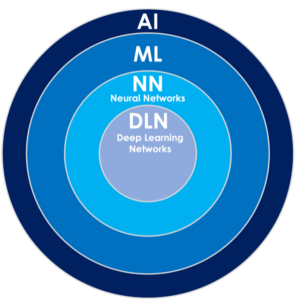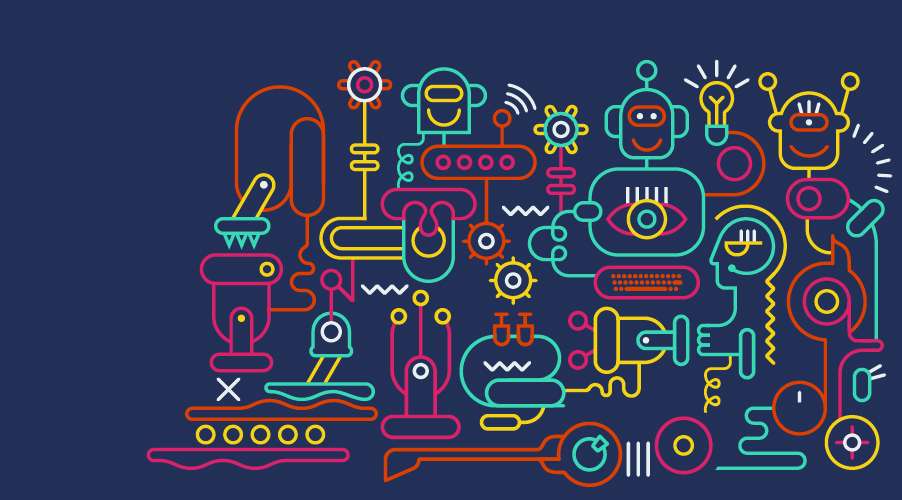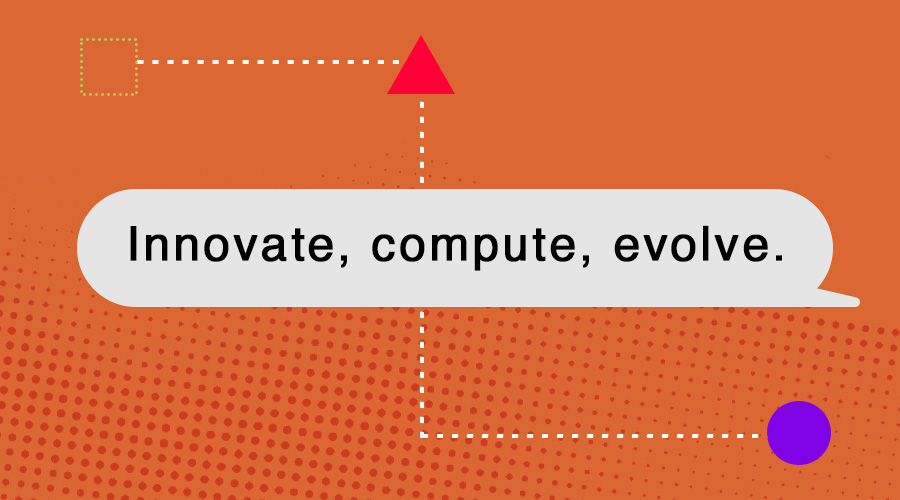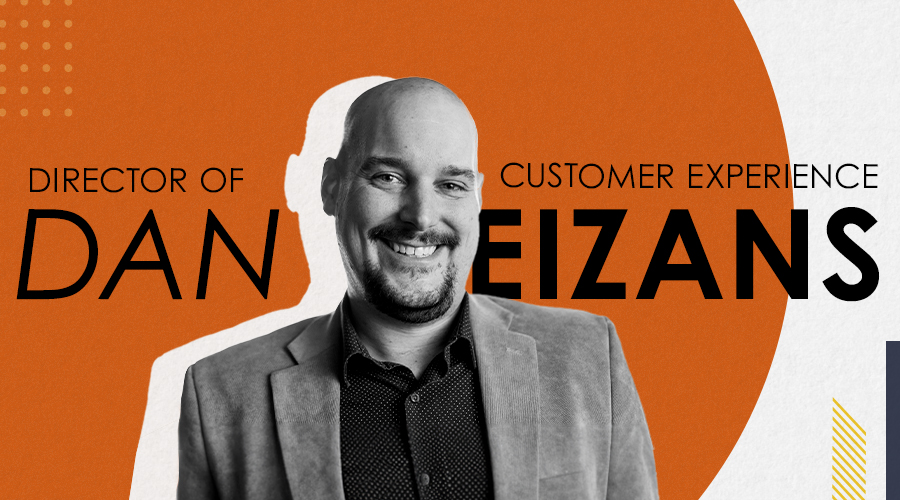Chat GPT-4 passed the American Uniform Bar Exam in the 90th percentile, scored a 710/800 on the SAT for Evidence Based Reading and can even go toe to toe with the world’s top sommeliers when it comes to theory and knowledge (77%).
Services like Synthesia allow anyone with basic presentation building skills to access avatars, create voiceovers and use AI stitched imagery and footage to produce high quality video in minutes.
With Artificial Intelligence (AI) coming to scale, new startups launching daily and improved data sets, is it time to hand the machines the key fob to your next campaign?
Pump the brakes friends.
A Primer on AI In 2023
First, let’s look at AI and its buddies, Machine Learning (ML), Neural Networks (NN) and Deep Learning Networks (DLN).
 Artificial Intelligence: Science created models for machines to solve tasks like humans
Artificial Intelligence: Science created models for machines to solve tasks like humans
Machine Learning: Algorithms created to train machines to “think” like humans from examples
Neural Networks: Interconnected nodes or “neurones” that process information to make predictions
Deep Learning Networks: A subset of machine learning that uses neural networks as a model to process hierarchy of data sets and representations
AI is a method for computing systems to solve for human created tasks (or prompts) derived from algorithms created to facilitate Machine Learning across data sets. Modifications to the algorithms come from human input. The machine learning relies on these human inputs or the availability of data or neural networks, or in more advanced cases, deep learning networks.
While AI is becoming increasingly more human-like, it still requires that Machine Learning (ML) be effective in its charge, which is why big companies (like Google) that have access to lots and lots of data are rapidly trying to develop AI Ad tools.
Google’s solution will aggregate content (images, videos and texts) supplied by marketers and remix the material using AI to produce ads based on client defined objectives and clickthrough. The problem with this approach is that the algorithm will continually tailor the ads to meet those KPIs.
The problem with that approach?
Today’s customers are oversaturated with choice and without focus on brand building, and the softer factors that contribute to it (emotional resonance, storytelling, distinctiveness), true connection to the customer becomes more and more difficult.
To boot, there’s plenty of bad actors and dark corners to worry about as well, with documented cases of “poisoning” AI data sets that can quickly make things go very, very askew or flat out misleading for brands, researchers and governments.
Our Guiding Principles For AI
So, as marketers and brand builders, what are we to do?
First thing to know – we have conversations with all our clients about their policies and respect the wishes of those that are still on the fence and have a zero-tolerance policy on using client-provided information in and around any publicly available, machine learning AI tools.
We’re still in the brave new world phase of AI (despite it being more than 70 years old!) and advertising and AI are at different stages of regulation. Simply put, the former has it, while the latter has none. That means, at least for the next several years (more likely the next 15-20), anything generated by AI can, and should, as the great Bruce Springsteen once said, ‘Get a little of that human touch.’
As an agency, we have a couple of hard and fast rules for using any form of AI.
1. No proprietary information
Do not upload or query string any confidential information into ANY AI tool. Since uploading the data feeds the algorithm and allows it to be accessed by machine learning, it puts Simantel and its clients at risk to a variety of nasty side effects.
2. Human brains and hands on input and output
For now, AI is only as good as the brains and data sources that feed it and requires human QA to make sure the information isn’t fabricated or wrong.
3. Use it as an assistant, not a worker
Only use AI for low-risk, low-value or low-specialization tasks. Use it to help speed up tasks, brainstorming with oversight and human input.
4. Remember that AI is a biased technology
AI is based on the data it’s trained on, it can reflect the biases, information gaps and undesirable patterns in the original data set.
At Simantel, we’re closely monitoring a host of AI tools to determine how we might use them for:
- General Productivity
- Research and Strategic Ideation
- Copy Ideation
And while we’re not using AI in these areas we see potential for use of AI tools for:
- Paid Media
- Art Direction
- Advanced Analytics
- Agency Operations
How Simantel Is Using AI
We’re encouraging our team to experiment with free versions of AI tools and have made some investment into others. Some of our favorites by category include:
General Productivity and Copy Inspiration
Jasper, Midjourney, ChatGPT, Dal-E, Open AI
We use these apps for first drafts of emails, creating custom imagery for internal presentations, drafting descriptions or overviews and editing internal emails or documents.
Research and Strategic Ideation
Midjourney, Momentum.ai, Quilt.ai, Google Bard, Dal-E, ChatGPT-4
We use these apps to:
- Accelerate background research on brands, categories, consumer perception, statistics and demographics
- Identify potential cultural or product usage areas for insights
- Make language in briefs more concise or creative
- Add custom visuals to decks to tell a more engaging story for briefings and meetings or serve as inspiration
The 5 Key Takeaways
When it comes to communicating effectively, building a brand, connecting with rapidly shifting culture or creating anything that grabs the attention of the masses the old rules no longer apply.
Storytelling and marketing in the information age requires us to mine through more data than ever before and AI is quickly coming to the marketplace at scale.
1. Ignoring AI is dangerous for brands
Companies that stay out of the AI conversation are at risk of losing market share to the companies that don’t and marketers that ignore its shortcomings to traditional branding and campaign risk ineffective campaigns.
2. Working with AI requires a new playbook
AI is already helping designers, creatives and strategists in tools we’ve been using for years, like Adobe Photoshop, Illustrator and Google Trends to name a few. But we are also seeing job postings for new positions related to AI and the ability to write prompts, interpret datasets and react to machine learning becoming more important.
3. AI can speed up low-risk tasks with some supervision
AI can be used to draft an email, prep materials for internal presentations and level up junior staff members, but not without an experienced human brain overseeing the results.
4. Public AI tools present legitimate risks to business
If brands want to harness the power of AI to the fullest it requires investment in private models that avoid the liability of public models. This is the only way to protect intellectual property and ensure data security.
5. AI is a biased technology
Generative AI creates content based on the data it’s trained on, so it will reflect the biases, information gaps and undesirable patterns in the original data set. It’s also fairly easy to skew the data with the right effort of query or bad actors.
We love talking about AI and are proud to share that our network partner AMIN does too. We would love to experiment with you. Have an idea for a project or just want to talk about the potential of AI in your work? Reach out.





